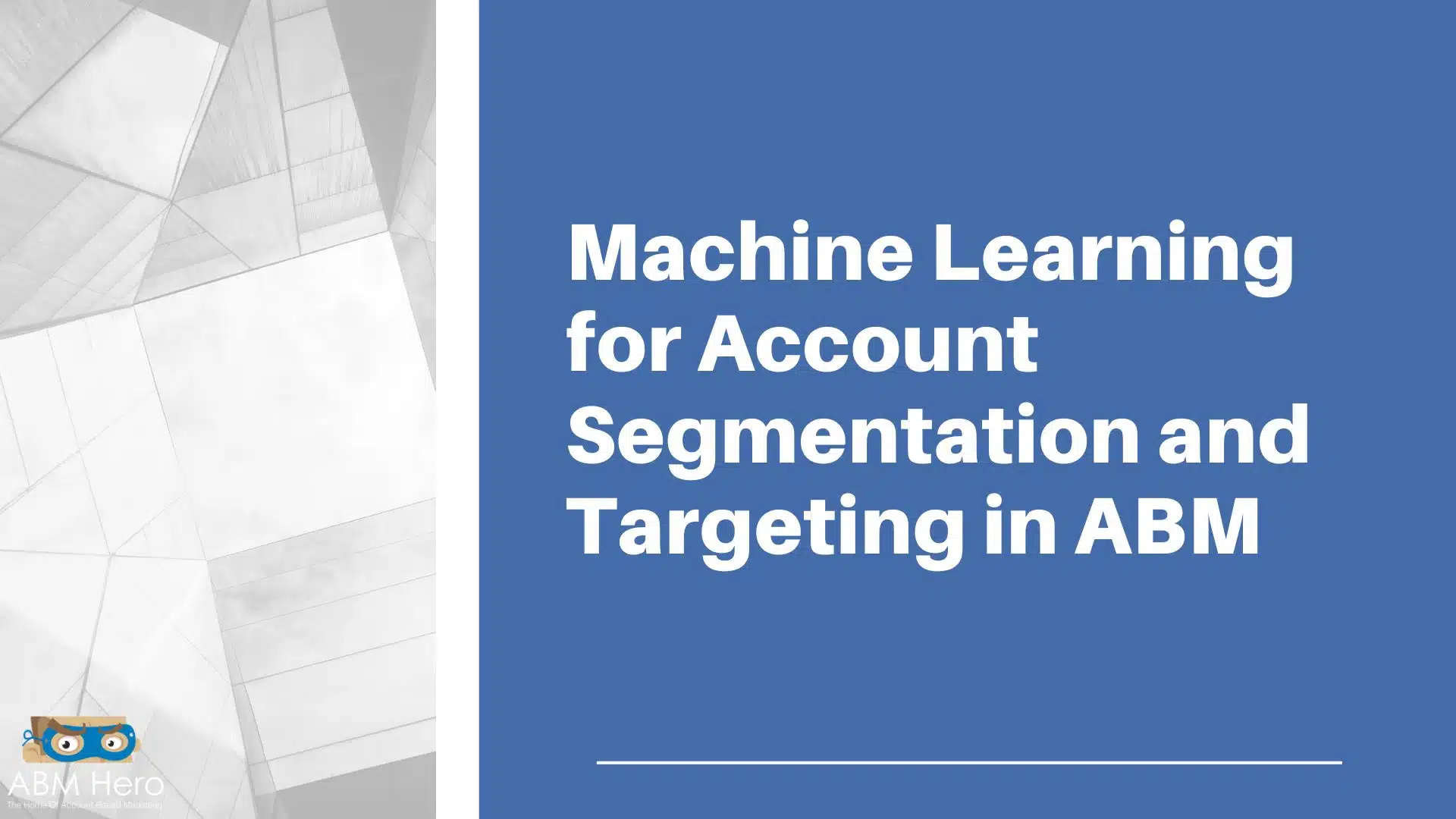Welcome to the exciting world of B2B marketing, where creativity and data science meet!
In this blog, we’re diving into Account-Based Marketing (ABM) and discovering the magic of machine learning for account segmentation and targeting.
Imagine a magician’s hat brimming with valuable accounts, hidden gems waiting to be discovered.
In this captivating scenario, Account-Based Marketing (ABM) is the magician’s wand, allowing us to channel our efforts and focus on those precious accounts.
When we incorporate the secret ingredient of machine learning, the true magic begins, elevating our targeting game to unparalleled heights.
So, why is account segmentation and targeting important? Well, imagine trying to sell surfboards to penguins or mittens to desert dwellers.
That’s a recipe for disaster! Effective segmentation allows us to identify the proper accounts with the highest potential for success while targeting ensures our marketing messages hit the bullseye.
But wait, there’s more! Machine learning swoops in as our trusty sidekick, armed with superpowers to analyze vast amounts of data faster than a cheetah chasing its lunch.
It helps us uncover hidden patterns, predict account behavior, and personalize our marketing efforts with laser-like precision.
We’ll explore how machine learning turbocharges account segmentation.
We’ll discover the benefits of this data-driven approach, peek into real-world success stories, and even tackle the ethical considerations that come along for the ride.
So, grab your favorite beverage, put on your data wizard hat, and unlock the secrets of machine learning for account segmentation and targeting in the enchanting world of B2B marketing.
Get ready to take your ABM game to the top!
The Role of Machine Learning in ABM
Now that we’ve set the stage with a touch of whimsy, let’s dive deeper into the fascinating world of machine learning and its pivotal role in account-based marketing (ABM).
Think of machine learning as the magical potion that transforms raw data into actionable insights.
It’s a branch of artificial intelligence that enables computers to learn and improve from experience without being explicitly programmed.
In the field of ABM, machine learning acts as our trusted guide, helping us navigate the vast seas of data and extract valuable nuggets of information.
But how does it work? Imagine an army of algorithms tirelessly sifting through mountains of data about your target accounts—demographics, firmographics, online behaviors, past interactions, and more.
These algorithms analyze patterns, detect correlations, and uncover hidden gems of knowledge that might have gone unnoticed by the naked eye.
With this newfound knowledge, machine learning empowers us to segment our accounts in ways that make marketing dreams come true.
We can group accounts based on shared characteristics, such as industry, company size, or geographic location.
But machine learning takes it a step further, allowing us to uncover nuanced segments based on complex relationships and behaviors that might not be immediately apparent.
Once we’ve unleashed the power of machine learning to segment our accounts, the real magic begins.
It helps us craft personalized marketing messages, create tailored content, and deliver them to the accurate accounts at the right time.
By understanding each segment’s unique needs and preferences, we can engage our target accounts in a way that sparks genuine interest and builds meaningful connections.
But it doesn’t stop there. Machine learning can also be a crystal ball, helping us predict which accounts will most likely convert and become valuable customers.
By analyzing historical data, behavioral patterns, and engagement metrics, machine learning algorithms can identify the accounts with the highest propensity to buy, allowing us to prioritize our efforts and allocate resources wisely.
Furthermore, machine learning fuels the flames of account-based advertising. It enables us to automate and optimize our advertising campaigns, ensuring our targeted messages reach the proper accounts across various channels.
By dynamically adjusting our ad targeting based on machine learning insights, we can maximize the impact of our advertising efforts and generate better results.
In ABM’s enchanting realm, machine learning is the key to unlocking hidden opportunities, delivering personalized experiences, and, ultimately, driving tangible business outcomes.
It empowers us to weave a tapestry of tailored marketing strategies, ensuring our efforts are well-spent on the right accounts or lost in the vast sea of noise.
3 Ways Machine Learning Can Improve Account Segmentation
Uncovering Hidden Patterns
Machine learning algorithms can process and analyze vast amounts of data to identify hidden patterns and relationships within your account data.
By leveraging this capability, machine learning can uncover insights that traditional segmentation approaches might miss.
It can identify subtle behavioral patterns, preferences, and correlations among accounts, allowing for more precise and nuanced segmentation.
Dynamic and Adaptive Segmentation
Machine learning algorithms can continuously learn and adapt to new data, enabling dynamic and adaptive segmentation.
As new information becomes available, the algorithms can automatically adjust segmentation criteria, ensuring your account segments remain up-to-date and relevant.
This flexibility allows you to respond to changing market dynamics and evolving customer behaviors, ensuring your targeting strategies are always aligned with the current landscape.
Predictive Segmentation
Machine learning can go beyond static segmentation by employing predictive analytics. By analyzing historical data and patterns, machine learning algorithms can predict future behaviors and outcomes of your accounts.
This enables you to segment your accounts based on their likelihood to take certain actions or exhibit specific behaviors, such as purchasing, renewing a contract, or upgrading their service.
Predictive segmentation helps you allocate resources effectively and focus on accounts with the highest potential for success.
3 Examples of Machine Learning Techniques for Segmentation
Account segmentation becomes interesting when you incorporate machine learning techniques to go through your data and sift through the noise to get the insight you need to form a reasonable judgment.
Clustering Analysis
Clustering analysis is a machine-learning technique that groups similar accounts based on shared characteristics.
It uses algorithms to identify patterns and similarities within the account data, allowing for the creation of distinct segments.
By leveraging clustering analysis, you can automatically group accounts that exhibit similar behaviors, demographics, firmographics, or engagement patterns.
This technique helps you identify meaningful segments and tailor your marketing strategies to each group’s needs and preferences.
Decision Trees
Decision trees are a popular machine-learning technique for account segmentation.
They create a hierarchical structure of decision nodes based on different criteria, allowing for segmenting accounts into various branches of the tree.
Decision trees analyze various attributes and behaviors of accounts to determine the most appropriate segment for each account.
This technique enables you to create rule-based segments that capture complex relationships and interactions among the account variables.
Collaborative Filtering
Collaborative filtering is a machine-learning technique commonly used in recommendation systems, but it can also be applied to account segmentation.
It analyzes the behaviors and preferences of similar accounts to make predictions about other accounts.
By leveraging the collective wisdom of similar accounts, collaborative filtering can segment accounts based on their propensity to exhibit specific behaviors or preferences.
This technique helps you identify and target accounts with common traits with personalized messaging and offerings.
Overcoming Challenges and Ethical Considerations
In the fascinating realm of Account-Based Marketing (ABM), where data and creativity fuel strategies, navigating the challenges and ethical considerations in wait is essential.
We’ll delve into the potential biases of algorithms, safeguarding data privacy, balancing Automation with a human touch, and ensuring fairness in the decision-making process.
Addressing Biases and Ensuring Fairness in AI Models
When using machine learning for account segmentation, it’s crucial to be mindful of biases that may be present in the data or algorithms.
Biases can lead to unfair segmentation and perpetuate inequalities. It’s important to carefully select and preprocess data to address this, ensuring it represents a diverse and representative sample.
Additionally, regularly monitoring and auditing the performance of the AI models can help identify and rectify any emerging biases.
Transparency and explainability in the model’s decision-making process can also ensure fairness and mitigate potential biases.
Data Privacy and Security Concerns in Automated Lead Scoring
Automated lead scoring relies on collecting and analyzing significant amounts of data. However, it’s essential to prioritize data privacy and security.
Implementing robust data protection measures, such as encryption, access controls, and anonymization techniques, helps safeguard sensitive customer information.
Complying with relevant data protection regulations, such as GDPR or CCPA, is crucial.
Organizations can build customer trust by adopting a privacy-by-design approach and ensuring that data is handled responsibly throughout the automated lead-scoring process.
Balancing Automation with a Human Touch in the Lead Qualification Process
While machine learning streamlines the lead qualification process, it’s essential to balance Automation and the human touch.
Automated lead qualification models can provide efficient and consistent evaluations but may need more contextual understanding or empathy.
Incorporating human involvement, such as manual review and input, allows nuanced judgment and a deeper understanding of complex scenarios.
By combining the strengths of both automation and human expertise, organizations can achieve more accurate lead qualification, improve customer experiences, and maintain a human connection in the B2B sales process.
Now that account-based marketing has moved to unprecedented heights, it’s time to tap into the countless potentials of machine learning in segmenting our target audiences.
Machine learning empowers B2B marketers to unlock the secrets hidden within their data, enabling precise segmentation, personalized engagement, and predictive insights.
However, as we harness the power of this transformative technology, it is crucial to address the challenges and ethical considerations that arise.
By proactively addressing biases, safeguarding data privacy, and balancing automation with the human touch, we can navigate the path to ABM success while upholding ethical standards.
With a mindful approach, we can harness the full potential of machine learning, creating meaningful connections, driving business growth, and achieving remarkable outcomes in the captivating realm of B2B marketing.





